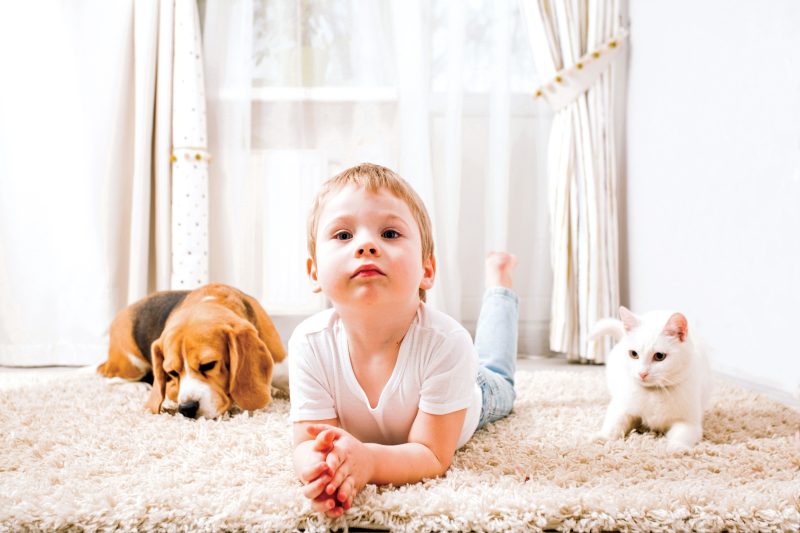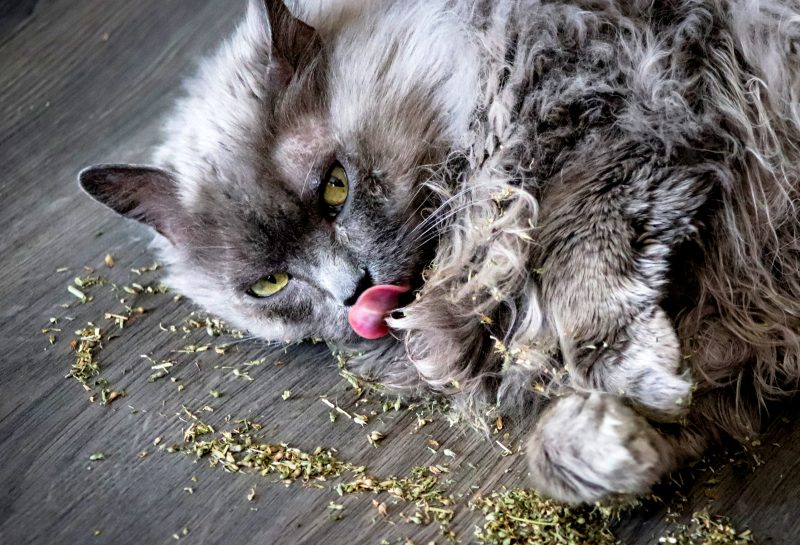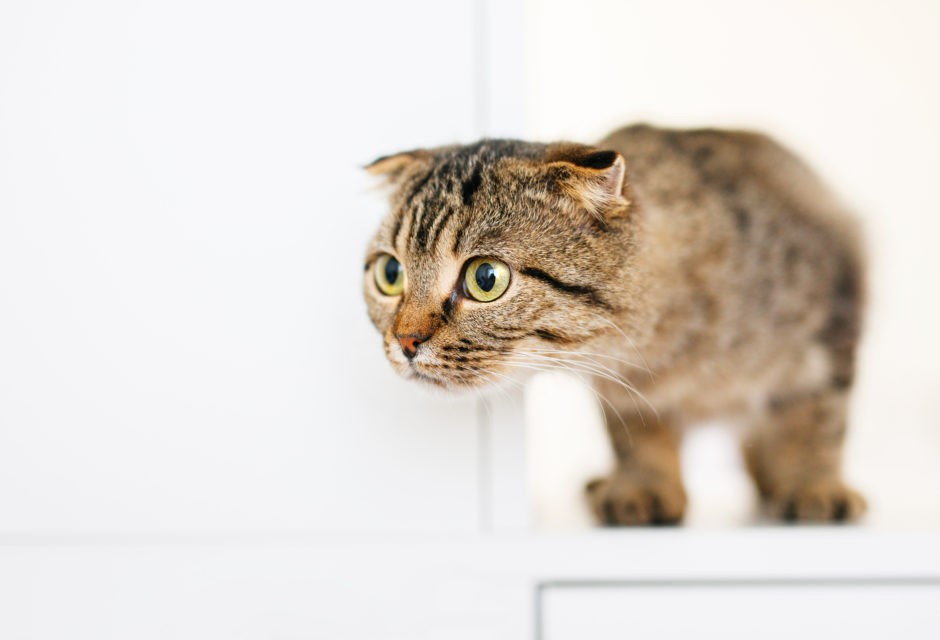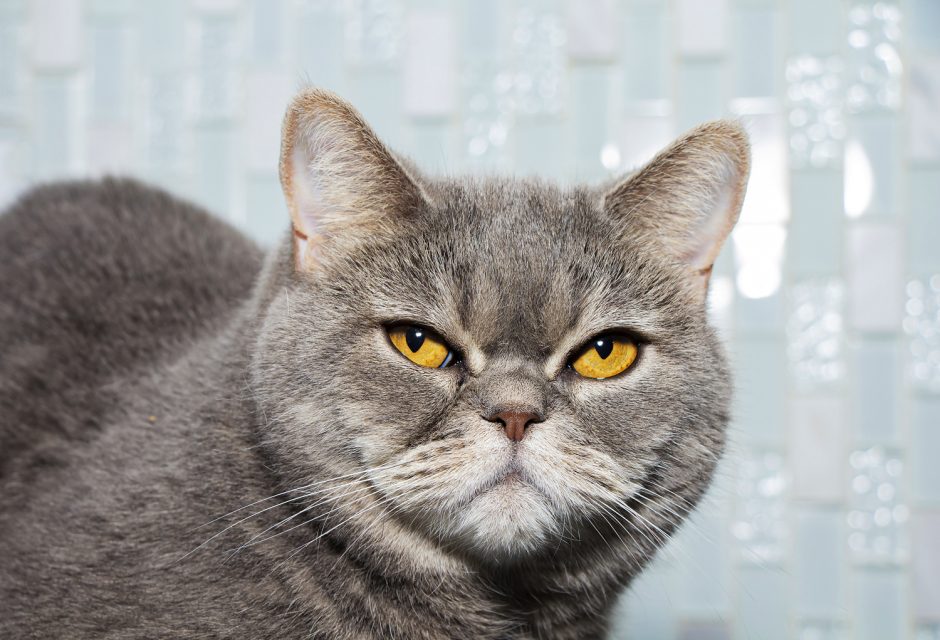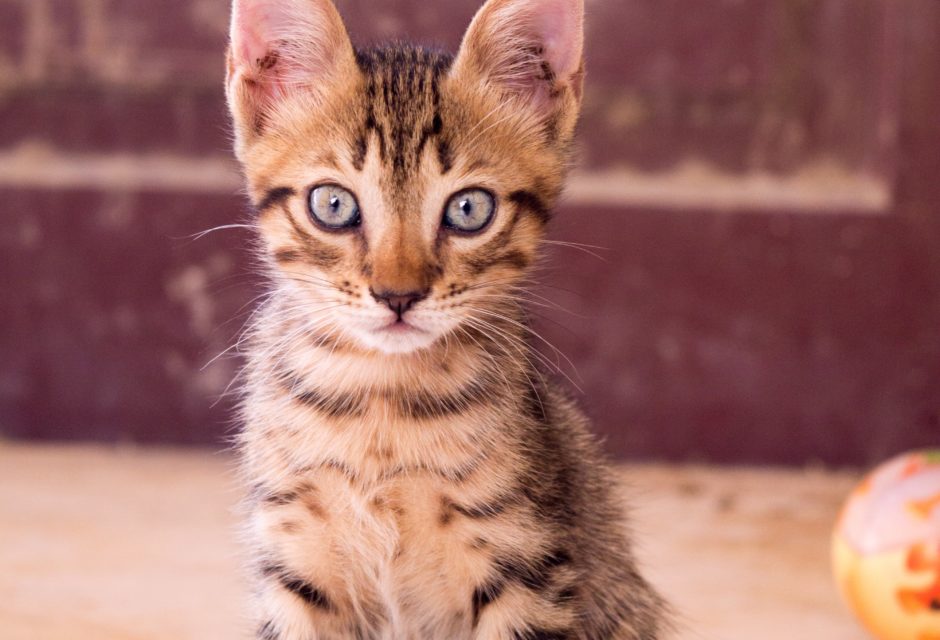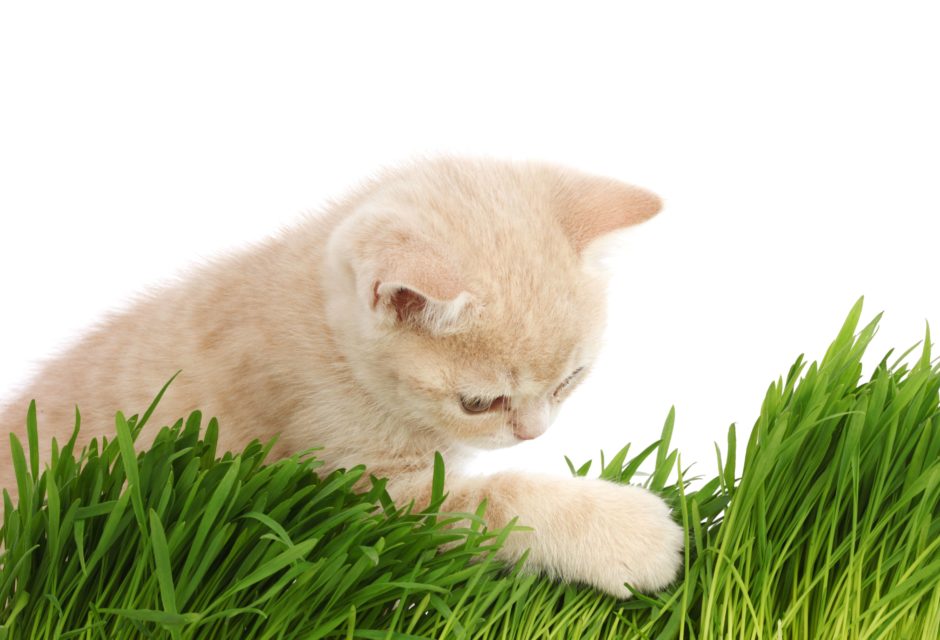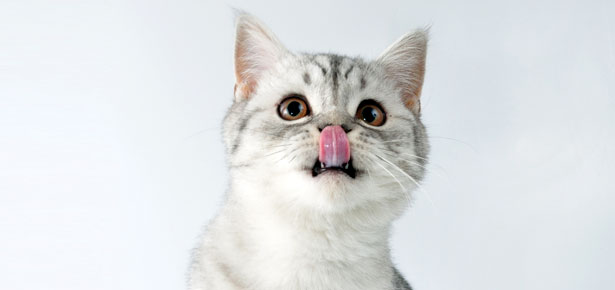

Smart Food
Living longer, getting stronger: how to optimize your cat’s health
Want your cat to maintain her kittenish traits well into her senior years? Here’s how to tailor your senior cat’s diet to ensure she’s as spry and sprightly on her 14th birthday as she was on her first.
The senior years can be a wonderful time for cats (all those naps in rays of sunshine!), especially if we maximize their health through smart strategies surrounding nutrition. If your senior is starting to show some of the common signs of aging, perhaps experiencing some challenges surrounding mobility, appetite, skin and coat, changes in weight, or mental alertness, give her a little nutritional boost by tailoring her diet and supplements to her specific needs.
Choosing a Food for Your Senior Cat
It’s time to re-evaluate what you are feeding your cat when she begins to show signs of aging. The average lifespan for a cat is 14 – 17 years and cats are typically considered seniors when they reach 10 years of age. Just like people, senior cats have different nutrient requirements than their younger, more active counterparts. Older cats are more prone to diseases like diabetes, hyperthyroidism, kidney failure, cancer, and urinary tract crystals, and while diet alone may not prevent disease from developing, it can certainly help ward it off or fight it.
First off, a senior cat requires fewer daily calories. Many of the commercially available foods designed specifically for senior cats are lower in calories to help keep your cat in good shape. Extra weight is hard on cats, particularly seniors, and exacerbates all manner of existing conditions—or causes them! Secondly, cats do best on foods that are high in moisture (canned or homemade) as they typically do not consume enough water (the old adage holds true!). Kibble is, however, better at keeping teeth clean, so give your cat a bit of kibble as a treat or add it into their dinner; that, coupled with regular teeth brushing, will help to maintain their dental health.
Changes in Body Weight: Gain vs. Loss

As cats age, their digestive tracts can lose some of their function. As a result, food that your cat was once doing well on can prove less digestible now that she is older. For starters, avoid foods containing by-product meals as they can be less digestible. Also, senior cats require more protein than younger cats, so choose a senior cat food with high quality digestible protein sources, such as chicken meal, fish meal, turkey meal or beef meal. Avoid “meat meal;” good quality foods identify their protein sources—no mystery meats for our cats! Though there has been some concern that geriatric cats should not consume high protein cat foods because of the theoretical risk of high dietary protein causing kidney damage, there is no evidence to support this concern in healthy older cats. That said, many geriatric cats often have underlying kidney problems, so consult your veterinarian before switching to a higher protein diet as a high protein diet could exacerbate an existing condition. Once given the all clear, switch to the high protein diet.
L-Carnitine
Carnitine is an amino acid that is required for fat metabolism, as Dr. Oz devotees will know. Under normal conditions, cats do not require carnitine supplemented in their diet, but as cats age or if they are prone to obesity, they may develop a requirement for this amino acid. As such, many cat foods already have carnitine in their formulations. If you are feeding a homemade diet, you can add carnitine to your cat’s diet, 15mg capsule for every cup of food.
Mobility, Arthritis, and Pain Relief
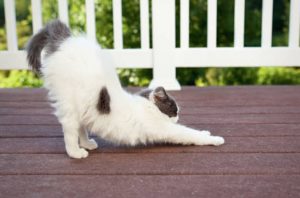
Omega-3 Fatty Acids: Omega-3’s are a wonder supplement because they reduce inflammation. Inflammation is what causes pain and swelling, which in turn reduces mobility for our cats. There are some joint supplements that contain high omega-3 fatty acids, but you can also supplement your cat’s diet with fish oil or sustainable marine algae-derived omega-3s such as DHA Gold (dhagold.com) mixed directly into their food.
Glucosamine & Chondroitin: Glucosamine and chondroitin were thought to be very good supplements for relieving arthritis pain and increasing mobility, however, over the test of time, research has suggested that they are very poorly bioavailable to the body. As a result, glucosamine and chondroitin are better used as injectable rather than dietary supplements. There are injectable products on the market that have been proven to be very beneficial in increasing mobility in dogs and horses that may have benefits for cats as well; your veterinarian should be able to advise you on what is available in your area. If you would like to use a dietary supplement, oral glucosamine and chondroitin supplements are considered safe. Glycoflex (Vetri-Science) and Cosequin (Nutramax Laboratories) are both good supplements.
Green Lipped Mussel (GLM): GLM is a natural product that has been clinically proven to improve mobility in dogs, and is something that may be equally effective for cats. GLM contains omega-3 fatty acids and is thought to contain other antioxidants as well as glucosamine. The dose of GLM should make up 0.3 percent of your cat’s normal food (or about 0.3g GLM/cup of cat food). Many joint supplements already contain GLM and are available from your veterinarian or online pharmacies. Be aware that many of the supplements that are sold in pet food stores do not contain enough of the active ingredients to prove effective, so read the label carefully and be prepared to do your homework before buying supplements.
Skin and Coat Health/Hair Loss

Vitamin E can also be very beneficial to skin health. Do note that the body can store large amounts of Vitamin E so it is important not to over supplement. Safer is to add dietary sources of Vitamin E; wheat germ and corn contain the highest amounts of Vitamin E but other good sources include peanuts, eggs, fish (many fish oil capsules contain added Vitamin E), and a wide variety of fruits and vegetables; play around with adding tidbits of these to your cat’s dinner.
Dietary Help For Chronic Disease Conditions
As cats age they are prone to developing kidney problems, hyperthyroidism, and type 2 diabetes. These diseases are medical conditions and need a proper diagnosis from your veterinarian before making decisions about feeding cats with these conditions.
Diets for Kidney Disease
The kidneys are responsible for a number of vital functions. If the kidneys start to fail, these functions are no longer performed. Signs you may see in a cat with kidney disease include increased trips to the litter box, loss of appetite, vomiting, diarrhea, and

Hyperthyroidism is a condition in which the thyroid gland over produces thyroid hormone, causing hyperactivity, weight loss, loss of litter box habits, diarrhea, excessive water intake and urination, and increased heart rate. There are many treatments for hypothyroidism, including simply managing the condition by diet change alone, though this approach requires the cat NOT to go outside nor consume any treats that contain iodine. Feeding a diet with less iodine decreases the amount of hormone produced by the thyroid and therefore reduces the symptoms of the disease.
Veterinary Diet Y/D is the only diet on the market clinically proven to treat hyperthyroidism in cats. It contains very little Iodine, which is normally required by dogs and cats—just not hyperthyroid ones.
Diets for Diabetes
Older, overweight cats often have diabetes. The number one thing you can do to help a diabetic cat is to help them lose weight. Initiating weight loss in cats is challenging but it will help your cat live a longer, healthier life. Using food puzzles and changing your cat’s diet can help with achieving weight loss goals. It is very important that cats do not go on a starvation diet; cats (especially chubby ones) are prone to developing fatty liver, a life threatening disease that can occur when an overweight cat does not eat for a couple of days. Cats must eat at least once every 24 hours in order to prevent fatty liver. Further complicating matters is that cats faced with sudden diet change often refuse to eat, thus risking fatty liver, so go slowly. Offer the new food separately from old food (in a different dish) and gradually reduce the serving size of the old food.
Diets designed for managing diabetes have higher protein and fiber and limited sources of starch to keep the glycemic index of the food low. These diets also have chromium added to the diets, which helps normalize blood glucose. Cats tend to like these foods so it shouldn’t be hard to switch to a diabetic diet. Remember, as with humans, the key to successful management of diabetes is diet control (including portion), exercise (use food puzzles), and medical monitoring of blood sugar.
Changes in Cognitive Function
Just like people, cats can experience age-related changes in brain function. The signs of cognitive dysfunction tend to occur after 10 years of age and can include changes in sleep patterns (ie sleeping more or less or at different times), vocalization (meowing or yowling loudly in the middle of the night); disorientation (getting lost in the house or outside), lack of interest (in play or people), staring off into space, or changes in litter box habits. Many of these changes can be attributed to chronic disease so it is important to get your cat to the vet for a diagnosis of feline cognitive dysfunction. Unfortunately, there has been less research into feline cognitive dysfunction than canine cognitive dysfunction, but if we borrow from canine research, increasing the amount of antioxidants that your cat is consuming may help. Additionally, feeding your cat a little extra salmon, herring or mackerel to increase the amount of Vitamin E and omega-3 fatty acids they consume may prove beneficial. Your veterinarian can provide you with more information on feline cognitive dysfunction. Some helpful online resources include: http://www.vet.cornell.edu/fhc/healthinfo/CognitiveDysfunction.cfm or vetstream.com/felis/Content/Disease/dis60684
Eyesight
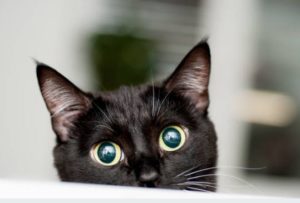
In general, you can’t go wrong with adding omega-3 fatty acids and antioxidants to your senior cat’s diet. A good fish oil supplement and the addition of fresh fruits and vegetables can definitely have a favourable effect on your senior cat’s health. Felines are notoriously fussy eaters so endeavouring to find the fruits and veggies your cat enjoys may prove frustrating, but it is worth the effort. Being persistent and offering little pieces of new foods to your cat can pay off in the long run. Often you’ll have to try introducing the new food several times before your cat decides to eat it. The best time to try out new foods? When your cat is hungry! Like us, a hungry cat is more motivated to try new things. Colourful fruits and veggies are likely to have the most benefits, so try introducing blueberries, raspberries, spinach, carrots, and tomatoes, but be careful not to upset your cat’s stomach with these additions; go slowly, trying out just a bit at a time until you find fruits and vegetables that your cat enjoys and tolerates. Just make sure the extras don’t make up more than 10 percent of your cat’s diet; remember, it doesn’t take much to make a difference for them! Go forth in good health.
Join the newsletter and never miss out on cat content again!
"*" indicates required fields
By clicking the arrow, you agree to our web Terms of Use and Privacy & Cookie Policy. Easy unsubscribe links are provided in every email.





